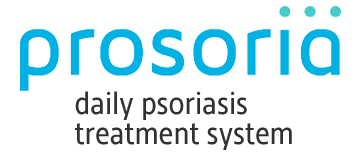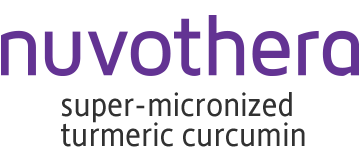
You might think of psoriasis as an itchy rash with red, flaky areas that cover the skin, but that’s just part of the story. While normal skin cells take about 28 to 30 days to develop, people with psoriasis develop new skin cells every three to four days. These cells pile up on the surface of the skin and can cause raised, itchy plaques and irritation. Psoriasis is a chronic autoimmune or immune mediated disease with lifelong consequences and may be associated with other health conditions such as diabetes, heart disease, irritable bowel disease, depression, psoriatic arthritis and cardiovascular disease, and several others. Though it is not contagious, the emotional impact of psoriasis can be debilitating and the social impact isolating. Steps can be taken to treat psoriasis symptoms, prevent recurrence and offer relief from pain and irritation, as well as provide confidence to those who feel stigmatized by their flares.
There are seven different types of psoriasis. Knowing which type you have will help you and your doctor determine the best course of treatment:
1. Plaque Psoriasis

Plaque Psoriasis: Plaque psoriasis is the most common form of psoriasis, affecting two to three percent of the population, and is the type of psoriasis eight out of 10 psoriasis sufferers have. It’s characterized by raised plaques - itchy, red, scaly areas most commonly found on the elbows, knees, feet, face, ears, and scalp (it can be found anywhere on the body). Though it is an immune mediated disease, plaque psoriasis can also be first triggered by a viral or bacterial infection or some form of injury. Often, plaque psoriasis can be diagnosed visually by a dermatologist and treatment for mild-to-moderate psoriasis can involve topical applications (such as topical steroids). Over-the-counter treatments such as salicylic acid and coal tar products are also effective in treating psoriasis. Severe plaque psoriasis may also require injectable biologic medications, oral immune suppressants and steroids in addition to topical applications.
2. Inverse Psoriasis

Image courtesy of the National Psoriasis Foundation
Inverse Psoriasis: Unlike plaque psoriasis, inverse psoriasis does not have scales. It’s characterized by bright red, shiny skin on the folds under the breasts, armpits, behind the knees, in the groin area and buttocks. Affecting about two to six percent of psoriasis sufferers, inverse psoriasis can be triggered by friction and sweat and can precede yeast outbreaks and additional discomfort. Something to keep in mind is that often times people have more than one type of psoriasis, and people with inverse psoriasis may also have plaque psoriasis, though not always. Because of the sensitivity of the skin involved, inverse psoriasis tends to be more difficult to treat and may take a combination of diluted topical steroids, phototherapy, soothing agents and immunosuppressive medications to reduce inflammation.
3. Guttate Psoriasis

Image via National Psoriasis Foundation
Guttate Psoriasis: While plaque and inverse psoriasis both present in patches, guttate psoriasis shows up as small reddened patches or bumps. Derived from the Latin word gutta, meaning ‘drop,’ guttate psoriasis is usually diagnosed based on raised, scale-covered, drop-like lesions. Appearing in only about two percent of psoriasis sufferers (generally children to adults younger than 30), guttate psoriasis is mostly seen on the mid-section, upper arms, thighs and scalp. Often, guttate psoriasis is triggered by an infection such as strep throat (up to 80 percent of the time), stress or skin injury. While for some it may eventually develop into plaque psoriasis, others never experience additional symptoms once the initial flare clears. Some may never require treatment for guttate psoriasis, but for severe cases, doctors may prescribe systemic medications.
4. Nail Psoriasis

Nail Psoriasis: Nail psoriasis affects the fingernails and toes, causing thickening of the nails, pitting, edges that raise from the nail beds, yellow to brown discoloration, chalk-like whiteness under the nails, and irregular contouring of the nails. Sometimes those with nail psoriasis can also develop fungal infections. As with all other forms of psoriasis, nail psoriasis is not contagious. Up to 95 percent of people who have nail psoriasis also have skin psoriasis. It is unclear what causes nail psoriasis to develop, and medical treatment is necessary if the area beneath the nails becomes inflamed or infected. Currently there is no effective treatments for nail psoriasis due to difficulty accessing the nail bed through the nail. The only treatment is to attempt to improve the appearance and function of affected nails and treat any fungal infections that may develop.
5. Erythrodermic Psoriasis

Image via National Psoriasis Foundation
Erythrodermic Psoriasis: Unlike other types of psoriasis, erythrodermic psoriasis is dangerous and potentially life-threatening. People with erythrodermic psoriasis require immediate medical attention and treatment. Though it is the least common type of psoriasis, it is also the most dangerous, as it can cause a wide-spread ‘fiery’ rash that appears as burned skin with itching, peeling in large sheets, intense pain and burning. Erythrodermic psoriasis also raises the body’s temperature and heart rate. It can be triggered by suddenly stopping systemic psoriasis treatments, anti-malarial medications, infection, sunburn, oral steroid use, excessive alcohol consumption, or an allergic reaction to medication. Without treatment, patients who suffer from this type of psoriasis can experience pneumonia, congestive heart failure, severe illness from protein and fluid loss, serious infection, and death (in up to 64 percent of cases, though that number is declining with improved treatment standards). Treatment includes IV fluids, topical steroid medications, wet dressings, bed rest, antibiotics, oral biologics, and systemic medications.
6. Pustular Psoriasis

Image via National Psoriasis Foundation
Pustular Psoriasis: As with erythrodermic psoriasis, pustular psoriasis can be severe (though generally not deadly) and requires immediate medical attention. Pustular psoriasis appear as pus-filled bumps surrounded by redness, usually on one area of the body, often in the anal or genital area or areas of skin folds. Though it appears contagious, it is not. As with erythrodermic psoriasis, pustular psoriasis can cause fever, chills, fast heart rate, nausea and muscle weakness. This form of psoriasis usually occurs in adults and can be triggered by pregnancy, too much sun exposure, chemicals, infection, stress, or suddenly stopping systemic medications (though for many a trigger is never identified). Pustular psoriasis is an extremely rare form of psoriasis and affects all races as well as men and women equally. Treatment can include topical medications, phototherapy, and systemic immunosuppressive medications.
7. Psoriatic Arthritis

Image via MedicineNet
Psoriatic Arthritis: Psoriatic arthritis is a type of arthritis that may affect people who have experienced psoriasis on their skin. In fact, according to the National Psoriasis Foundation, up to 30 percent of people with psoriasis develop psoriatic arthritis. Psoriatic arthritis can cause stiffness in joints as well as swollen fingers and joints, foot pain and lower back pain. It is critical for people with psoriasis who experience joint pain to see their doctor immediately, as psoriatic arthritis can permanently damage joints if left untreated. It’s important to note that people with psoriatic arthritis are also at a higher risk of developing cardiovascular disease. Treatment might include phototherapy, non-steroidal anti-inflammatory medications, immunosuppressive medications, biologics, and possible joint replacement surgery.
Beyond the physical impact of psoriasis, this immune mediated disease carries a huge emotional toll, and it’s important to recognize the possible emotional consequences of living with psoriasis. While many immune mediated diseases are ‘hidden,’ most forms of psoriasis affect the skin, making it visible for all to see. This lack of privacy can leave psoriasis sufferers feeling as if their disease is on display, with no way to escape the social stigma attached to visible illness sometimes leading to isolation. People having psoriasis often experience depression, anxiety, stress and increases in flares due to these added psychological symptoms.
Additionally, because of a lack of public understanding, people with psoriasis can experience public stigmatization. Comments and stares from strangers can cause people with visible psoriasis difficulty in finding jobs, romantic partners -- even eating with their families at restaurants. A National Psoriasis Foundation survey showed 65 percent of psoriasis sufferers have experienced discrimination and 40 percent reported that they do not receive equal service at public establishments like hair salons and health clubs. While treating the outward symptoms of psoriasis improves the outlook of these patients, some develop drug and alcohol dependency or other addictive behaviors as a way to cope, and it can take years of dedicated medication and therapy to recover. “Researchers have found the psychosocial effects of psoriasis can equal those experienced with heart failure or cancer…” and that’s a big problem considering more than 8.0 million people in the US live with psoriasis. Because health providers often treat the physical, and not the mental symptoms of psoriasis, a key step toward addressing this problem is driving patient advocacy and social awareness.
The first thing to keep in mind with any form of psoriasis is that it is treatable. Intervention may come in the form of topical medications, biologics and systemic medications, as well as many other treatment options. The key is finding the one that works for you and staying compliant with the medication to keep your psoriasis under control. The second thing to keep in mind, and perhaps more importantly, is that you are not alone. Though it can feel isolating to live with psoriasis, you can talk to your dermatologist about finding support groups such as the National Psoriasis Foundation. There are also internet chat groups available online 24/7, public meetings, and even dating sites dedicated to those who live with psoriasis.
It can be scary and frustrating seeking help for psoriasis, but the consequences of not trying are worse. If you’re living with psoriasis, know that there is hope for you. There are others who understand, and if you seek them out - be they in the medical community or social arena - your life will change for the better.
Today more than 52 percent of psoriasis sufferers say they’re dissatisfied with current psoriasis treatments available on the market. We encourage you to learn more about Prosoria™, the first once-daily, three-step psoriasis treatment system clinically proven to relieve the symptoms of plaque psoriasis, including scaling, flaking, itching, redness and irritation, and help prevent recurrences.
Want to know more about how Prosoria™ could help you? Check out the product page on our website, and feel free to follow up with us on Facebook if you have any questions! We are here to help you on your journey toward clearer skin and a healthier, more confident you.
Be clearer, be confident, be you.

